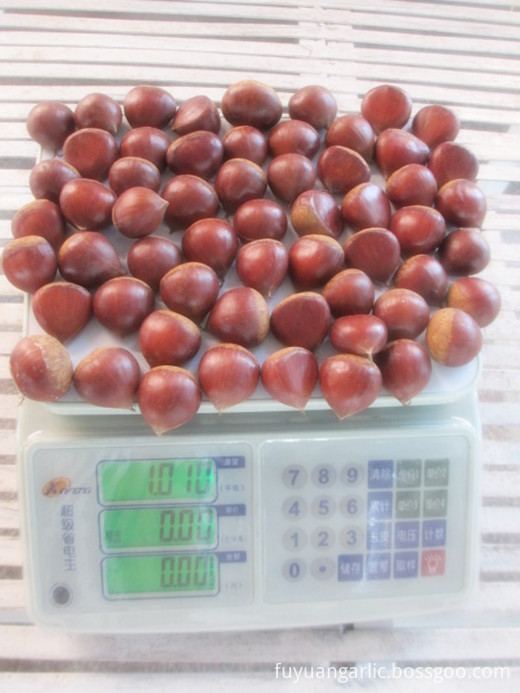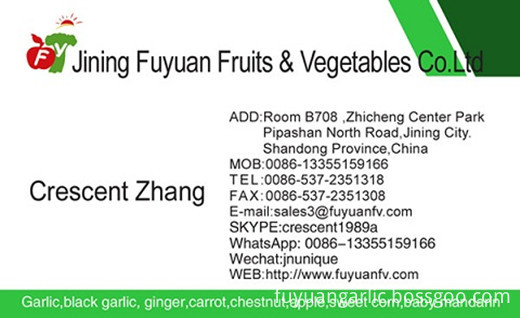Pollution-free food pigeon standard
This standard applies to pollution-free fresh, frozen pigeon meat.
2. Normative references The clauses in the following documents have been adopted as references to this standard. For dated references, subsequent amendments (not including errata content) or revisions do not apply to this standard, however, encourage the parties to reach an agreement in accordance with this standard to study whether the latest use of these documents can be used version. For undated references, the latest version is applicable to this standard.
GB 191 packaging storage and transportation logo
GB 4789.2 Determination of the total number of colonies in food hygiene microbiological examination
GB 4789.3 Food hygiene microbiological examination of coliform bacteria
GB 4789.4 Microbiological examination of food hygiene Salmonella test
GB/T 5009.11 Determination of total arsenic in foods
GB/T 5009.12 Determination of lead in foods
GB/T 5009.13 Determination of copper in foods
GB/T 5009.17 Determination of total mercury in foods
GB/T 5009.19 Determination of Residues of BHC and DDT in Foods
GB/T 5009.44 Method for analysis of hygienic standards of meat and meat products
GB/T 6388 Shipping Package Receipt and Delivery Symbol
GB/T 7718 General Standard for Food Labeling
GB 9695.15 Determination of moisture content of meat and meat products
GB 9695.19 Methods of sampling meat and meat products
GB 12694 Hygienic specifications for meat processing plants,
GB/T 14931.1 Determination of oxytetracycline, tetracycline, and chlortetracycline residues in livestock and poultry meat (HPLC)
GB 18407.3 Agricultural product safety and quality Environment-friendly requirements for pollution-free livestock, poultry and meat production areas
NY 467 Livestock and Poultry Sanitary Quarantine Practice
NY 5028 Pollution-Free Food Processing Water Quality of Livestock and Poultry Products
NY 5029 pollution-free food pork
NY 5034 Harmless Food Chicken No. 236 "Announcements of the Ministry of Agriculture of the People's Republic of China" in "Enrofloxacin and Ciprofloxacin Residues in Animal Source Foods - High Performance Liquid Chromatography"
3. Terms and Definitions The following terms and definitions apply to this standard.
3.1
Visible foreign matter visible foreign matter
Contaminants or contaminants that can be eaten by humans, such as fluff, feces, bile contaminants, plastics, metals, residual feed, etc.
4, technical requirements
4.1 Raw pigeons for slaughter should be from non-epidemic areas, healthy and disease-free. The environment of the farm meets the requirements of GB l8407.3, and they are quarantined and examined to obtain the certificate of conformity.
4.2 Slaughter processing
4.2.1 When meat pigeons are slaughtered, reference shall be made to the requirements of NY 467; they shall be quarantined by a statutory body and qualified for inspection, and shall obtain quarantine certificates for animal products. Hygiene requirements of processing enterprises meet the requirements of GB l2694, and the processing water should meet the requirements of NY 5028.
4.2.2 After the meat pigeons are slaughtered and bleeding, feathers, clam shells, foot skins, claws, etc. shall be removed to keep the shape of the pigeon carcasses intact. The time from bloodletting of meat pigeons to packing of processed products into cold storage shall not exceed 2 hours.
4.3 Cold processing
4.3.1 Within 45 min after the slaughter of the cooled meat pigeons, the central temperature of the meat should fall below 10°C.
4.3.2 Frozen products to be frozen shall be frozen below -35°C, and their central temperature shall fall below -15°C within 12 hours.
4.4 Sensory indicators should meet the requirements of Table 1.
Table 1 Sensory index items Fresh Pigeon Frosted pigeon meat (after thawing)
Appearance without skin pox, skin without red blood congestion traces Tissue muscles are elastic. Immediately after acupressure, the indentation site restores the muscles in situ. After the pressure is applied, the depressions can be slowly restored. The color of the epidermis and the muscle section are shiny, with inherent color and odor With the inherent odor of pigeon meat, no odor boiled clear clarified, cellulite reunited in the liquid surface, with visible visible foreign body foreign body can not be detected
4.5 Physical and chemical indicators should meet the requirements in Table 2.
Table 2 Physical and chemical indicators Item index Thawing water loss rate, % ≤ 8
Moisture, % ≤77
Volatile base nitrogen, mg/100g ≤ 15
Mercury (as Hg), mg/kg ≤ 0.05
Lead (as Pb), mg/kg ≤ 0.50
Arsenic (calculated as As), mg/kg ≤ 0.50
Copper (measured as Cu), mg/kg ≤ 10
666 (BHC), mg/kg ≤ 0.10
DDT, mg/kg ≤ 0.10
Aureomycin, mg/kg ≤ 0.10
Oxytetracycline, mg/kg ≤ 0.10
Enrofloxacin, mg/kg ≤ 0.10
Sulfonamides (based on the total amount of sulfonamides), mg/kg ≤ 0.10
4.6 Microbial indicators should meet the requirements of Table 3 Table 3 Microbial indicators Item count Total number of colonies, cfu/g ≤ 510E5
Coliform, MPN/100g Salmonella Not Detected
5, inspection methods
5.1 Sensory test According to the method specified in GB/T 5009.44.
5.2 Physical and chemical inspection
5.2.1 Thawing water loss rate is determined according to the method specified in NY 5034.
5.2.2 Determination of moisture according to the method specified in GB 9695.15.
5.2.3 volatile base nitrogen determined according to GB/T 5009.44 method.
5.2.4 Mercury is measured according to the method specified in GB/T 5009.17.
5.2.5 Lead is measured according to the method specified in GB/T 5009.12.
5.2.6 Arsenic shall be measured according to the method specified in GB/T 5009.11.
5.2.7 Copper is measured according to the method specified in GB/T 5009.13.
5.2.8 BHC and DDT are measured according to the method specified in GB/T 5009.19.
5.2.9 Determination of chlortetracycline and oxytetracycline according to the method specified in GB/T 14931.1.
5.2.10 Enrofloxacin is measured in accordance with the method specified in the "Notice of the Ministry of Agriculture of the People's Republic of China" No. 236.
5.2.11 Sulfonamides are determined according to the method specified in NY 5029.
5.3 Microbiological examination
5.3.1 The total number of colonies shall be determined according to the method specified in GB 4789.2.
5.3.2 Coliform bacteria were determined according to the method specified in GB 4789.3.
5.3.3 Determination of Salmonella according to the method specified in GB 4789.4.
5.4 The product center temperature is measured according to the method specified in NY 5034.
6, sampling inspection rules Sampling inspection rules in accordance with the requirements of Appendix A.
7, determine the rules
7.1 The sensory index of the product is a defect item. Physical and chemical indicators and microbiological indicators are key items. If the product fails one of the two items or the key item of the inspection defect item, the product is judged to be a non-conforming product.
7.2 When the defect inspection of the tested sample is unqualified, it is allowed to re-enumerate the sample for re-examination according to the provisions of 6 of this standard. The re-inspection result is the final inspection result.
8 Signs, Packaging, Storage, Transportation
8.1 The logo inner packaging (sales packaging) logo shall meet the requirements of GB 7718; the outer packaging logo shall comply with the provisions of GB l91 and GB/T 6388.
8.2 Packaging and packaging materials should be brand new, clean, non-toxic, harmless, and have no odor.
8.3 Transport should be transported using tools that meet hygiene requirements. When products are shipped, they must not be stored together with toxic, harmful, odorous items.
8.4 Storage Cooled pigeons should be stored in an environment between -1°C and 40°C. Frozen pigeons should be stored in a freezer below -180°C. The maximum storage temperature should not exceed -150°C.
Appendix A
(Normative Appendix)
Specimen inspection rules for pollution-free food pigeons
A.1 Sampling method
A.1.1 Batch: The products produced by the same production line of the same shift are the same batch.
A.1.2 Sampling: Sampling is performed in accordance with the provisions of GB 9695.19.
A.2 Inspection type
A.2.1 factory inspection: Each batch of products before leaving the factory, should obtain a statutory body animal product quarantine certificate, the production company should carry out the factory inspection, factory inspection content including packaging, labels, marks, net content, sensory, etc., after passing inspection Only after the product has passed the certificate can you leave the factory.
A.2.2 Type inspection: Type inspection is a comprehensive assessment of the product, that is, testing of all the technical requirements specified in this standard. One of the following cases should be type tested:
a) When applying for the use of pollution-free food signs;
b) After formal production, there will be major changes in the raw materials and production environment, which may affect product quality;
c) when the relevant competent administrative department proposes to carry out type inspection;
d) When the relevant parties dispute the quality of the product when arbitration is required.
e) Market access.
Fresh Chestnut blooms, chestnut flowers show long strips.Thanks to the flowers, you can grow a chestnut ball that is slowly spurt. At this time, the chestnut ball should not be picked. On the one hand, you will be tied to your hand and it is very painful. On the other hand, this kind of tender chestnut ball is not yet long. Chestnut.Mature chestnuts should be full and cracked like this, giving a fruitful feeling, with red mature chestnut inside. Accidentally, the chestnut ball will fall down, of course, may also be the chestnut inside directly fall, this time, i n fact, just take a bag, take a wooden stick to the mountains and plains to chestnut forest to find chestnut. It is also possible to use the long bamboo sticks to beat the chestnut balls directly from the tree.The chestnut ball that is picked back can make it crack naturally or with a hard object. It is possible to go inside the chestnut.We also supplied Fresh Ginger ,Air Dried Ginger , Fresh Garlic , White Garlic ,red garlic. Sweet Corn , Fresh Taro , Fresh Potato ,Holland Potato. Fresh Baby Mandarin, Fresh Red Grape, Fresh Pomelo , Fresh Ya Pear Chaotian Chili , Paprika Powder , Fresh Apple and so on.


Fresh Chestnut
Fresh Chestnut,Bulk Fresh Chestnuts,Organic Fresh Chestnuts,Healthy Chestnut
Jining Fuyuan Fruits And Vegetables Co., Ltd. , https://www.fuyuanfv.com